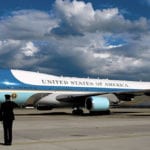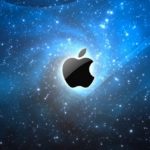 Movies and TV
Movies and TV  Movies and TV
Movies and TV  History
History 10 Things You Never Knew About Presidential First Ladies
 Movies and TV
Movies and TV 10 Zombie Movies That Will Actually Terrify You
 Humans
Humans 10 Times Scientists Were Absolutely Sure… and Absolutely Wrong
 Our World
Our World 10 Pivotal Moments for Life on Earth
 Movies and TV
Movies and TV 10 Most Realistic Medical TV Shows of All Time
 Creepy
Creepy 10 Eerie & Mysterious Ghosts of the Pacific Coast
 Weird Stuff
Weird Stuff 10 Typos That Accidentally Changed History
 History
History 10 Times Trickery Won Battles
 Technology
Technology 10 Awesome Upgrades to Common Household Items
 Movies and TV
Movies and TV 10 Movie Flops That Found Their Way to Cult Classic Status
 History
History 10 Things You Never Knew About Presidential First Ladies
 Movies and TV
Movies and TV 10 Zombie Movies That Will Actually Terrify You
Who's Behind Listverse?

Jamie Frater
Head Editor
Jamie founded Listverse due to an insatiable desire to share fascinating, obscure, and bizarre facts. He has been a guest speaker on numerous national radio and television stations and is a five time published author.
More About Us Humans
Humans 10 Times Scientists Were Absolutely Sure… and Absolutely Wrong
 Our World
Our World 10 Pivotal Moments for Life on Earth
 Movies and TV
Movies and TV 10 Most Realistic Medical TV Shows of All Time
 Creepy
Creepy 10 Eerie & Mysterious Ghosts of the Pacific Coast
 Weird Stuff
Weird Stuff 10 Typos That Accidentally Changed History
 History
History 10 Times Trickery Won Battles
 Technology
Technology 10 Awesome Upgrades to Common Household Items
Ten Highly Anticipated & Heavily Promoted Products That Were Duds
Capitalism is at the core of our society; businesses and corporations produce consumer goods. This system breeds innovation. However, with a competitive free market, a company cannot create just one product in the same way and continue to be successful indefinitely. As time passes, products must be revamped, upgraded, and improved.
Sometimes, the public loves a new version of an old favorite. Other times, not only do the people not like it, but the product falls so far from the mark that stores can’t give the stuff away. Frequently, a company will spend millions on advertising campaigns and marketing, whether a new twist on an old favorite or an entirely new item. When a well-known company does so and can still not move the product, it is deemed a “dud.” These are the ten biggest duds of all time.
Related: Top 10 Bizarre Cancelled Food Products
10 Crystal Pepsi, 1992
In 1992, not for the first time, Pepsi tried to push a new version of its classic cola. Crystal Pepsi was sold in the U.S., Australia, and Europe for two years. The product failed due to branding issues, corporate sabotage from archrival Coca-Cola, and overall consumer dissatisfaction with the flavor of the product.
These factors culminated in one of the most well-known product flops in history. The YUM! Corporation took over operations for Pepsi Crystal and received many complaints that the product didn’t taste enough like Pepsi; they did nothing about it. Despite an attempted reboot in 2016, the product has never justified the millions spent on ad campaigns and is still considered an epic fail.[1]
9 Apple Newton, 1993
The Newton is a series of personal digital assistants (PDAs) developed by Apple Inc. It was technologically innovative, but it had early issues with its handwriting recognition software, and combined with ridiculous prices, the product ultimately failed. Apple originally started development on the Newton in 1987. The device hit the shelves in August 1993, and production ended in February 1998.
According to former Apple CEO John Sculley, the company invested approximately $100 million to develop the device, and the term “Personal Digital Assistant” was first coined in reference to the Newton. While Apple did profit from the Newton, other companies developed their own, more affordable PDAs, causing sales to spiral. The product was discontinued after five years and is still considered a monumental flop.[2]
8 RJ Reynolds’ Smokeless Cigarettes, 1989
RJ Reynolds is the producer of cigarette brands such as Newport and Camel. The company has been pushing tobacco for well over a hundred years. While under pressure from anti-smoking campaigns throughout the 1980s, Reynolds put over $300 million into a new product, “The Smokeless Cigarette.” The scheme was just as laughable as it sounds. This product allowed the tobacco to be heated but not ignited; the taste and scent produced were not the same as a lit cigarette.
The smokeless cigarette was only tested in a handful of cities in Arizona and Missouri. In addition to a substandard flavor, the cigarette was difficult to light and did not actualize the task of creating a carcinogen-free cigarette. After only five months, the product was pulled from shelves. According to a March 1, 1989 issue of the New York Times, Reynolds discontinued the cigarette because consumers had decisively rejected it.[3]
7 McDonald’s Arch Deluxe, 1996
McDonald’s has been adding to its menu for decades, and in 1996, the fast food giant introduced the Arch Deluxe. It targeted a sophisticated demographic and was just as successful as one would think. After spending over $150 million on marketing campaigns, the burger was removed from the menu before the decade was up. Despite recruiting fine dining chef Andrew Selvaggio to create the sandwich, sophisticated suburbanites weren’t interested. It consisted of a quarter pound of beef on a split-top sesame seed potato bun, topped with a circular piece of peppered bacon, leaf lettuce, tomato, American cheese, onions, ketchup, and Dijonnaise sauce.
The Arch Deluxe was the greatest failure in McDonald’s marketing history. Through ad firm issues, a disinterested demographic, and a lack of support from franchisees, this product has become known as “A hell of a burger and a hell of a flop.” Prior to launch, the Arch was projected to bring in $1 billion to McDonald’s; needless to say, it fell short of the mark. In 2018, the company tried to reboot the product with the Arch Burger, a similar sandwich with a similar result, compounding McDonald’s most epic failure.[4]
6 Cosmopolitan Yogurt, 1999
 Cosmopolitan magazine has existed since the 1880s and is widely regarded as the standard in fashion and family magazines. For unknown reasons, the company produced a yogurt line in 1999. The late ’90s and early 2000s saw an overly saturated yogurt market, and the product was discontinued after only 18 months. The tasty snack was overpriced at over a dollar per unit. Combining sex and dairy was a long shot, and “Cosmo” readers were not impressed.
Cosmopolitan magazine has existed since the 1880s and is widely regarded as the standard in fashion and family magazines. For unknown reasons, the company produced a yogurt line in 1999. The late ’90s and early 2000s saw an overly saturated yogurt market, and the product was discontinued after only 18 months. The tasty snack was overpriced at over a dollar per unit. Combining sex and dairy was a long shot, and “Cosmo” readers were not impressed.
The brand extension Cosmopolitan employed is called piggyback marketing; it accounted for an underwhelming product launch and was the only marketing the product saw. “While there is not a lot of information on the details of Cosmo’s failed venture, it is clear that the product faced a significant lack of connection to the Cosmo brand and its other products. In the end, the brand extension (or piggyback marketing) attempted by Cosmo was too much of a long shot.” Cosmo had created an overpriced product in a saturated market and had ignored a potential demographic, leading to its most epic fail.[5]
5 Google Glasses, 2012
Project Glass is a “Moonshot” technology developed under the Google (GOOG) X initiative. The product was mismarketed, giving the public a distorted view of what to expect from Glass. Initially, it was to be promoted as a futuristic prototype, but the hype built up around the launch, coupled with a high price tag. Glass subsequently failed to meet expectations.
Google spent hundreds of millions of dollars rolling out this product between research, development, and marketing. Unfortunately, they spent little to no money explaining it. The product was not intuitive and did not deliver what consumers felt they were promised. In just three years, Google discontinued the product; the marketing team had dropped the ball. There was no actual launch, explanation of the product, or mainstream advertising, and it was difficult to purchase. While this product had potential, it turned into an epic fail.[6]
4 Mobile ESPN, 2006
Introduced in January 2006, ESPN Mobile was a short-lived “mobile virtual network operator,” or MVNO. ESPN’s idea was to sell phones exclusively offering ESPN content and video, leasing network access from Verizon Wireless. But ESPN had only one phone at launch, an overpriced Sanyo device. No one bought the product, even after ESPN sunk $150 million into it, including a reported $30 million on a Super Bowl ad. Despite the investment, the project reached only six percent of its sales projection.
The idea was scrapped by the end of 2006, less than a year after its launch. Mobile ESPN may be the biggest failure in the company’s history, but it also set the stage for ESPN to dominate the industry. Although the service was considered overpriced and a failure, in retrospect, the actual data and audio-visual backbone and software behind the service would be re-adapted successfully for the smartphone age several years later, untied to a specific carrier.[7]
3 Gerber Singles, 1974
In 1974, Gerber Foods decided to innovate the baby food industry with food targeted to… adults. They produced small jars of beef burgundy, Mediterranean vegetables, and blueberry delight. As Gerber has been making baby food since 1927, it seemed the 1970s were the perfect time to move into adult food. One small problem: No one wanted a spoonful of creamed beef.
While the logic is sound, something about eating dinner out of a small glass jar turned out to be unappealing to even the most solitary people. Gerber’s marketing team believed the product would work based on the lower birth and marriage rates at the time. They saw 40 million singles, representing roughly $205 million in unsold profits. While it was a valiant effort, Gerber Singles was an epic fail.[8]
2 Ford Edsel, 1957
Bill Gates cites the Edsel as his favorite case study. Even the name “Edsel” is synonymous with “marketing failure.” Henry Ford was the original car maker, and Ford Motors created some of the most classic automobiles in history. In 1957, they introduced the Edsel, an expansion of the Lincoln-Mercury Division to three brands: the Mercury-Edsel-Lincoln Division. The model was named after Ford’s son, Edsel Ford.
Americans wanted smaller, more economical cars. However, Ford Motors execs failed to define the model’s niche in the car market. Most Edsel models’ pricing and market aim were too high for a product that consumers did not want. It was taken off the market in 1960.[9]
1 Betamax, 1975
Back in the 1970s, there was a massive rivalry between home video formats, VHS vs. Betamax. Beta was released in 1975 and allowed consumers to record up to one hour of television footage, while the VHS equivalent released in 1977 allowed for two, and the war between the two began. This feud lasted more than a decade, and while both recording formats have their unique qualities, they are very similar, which caused the format war to drag on for years.
In the end, VHS won despite Betamax having a higher resolution. VHS became preferable to most consumers due to its affordability and recording time. Despite being somewhat popular for nearly a decade, today, many people have never even heard of Betamax; it is the greatest epic fail of all time.[10]








